RBS 2012 Annual Report Download - page 367
Download and view the complete annual report
Please find page 367 of the 2012 RBS annual report below. You can navigate through the pages in the report by either clicking on the pages listed below, or by using the keyword search tool below to find specific information within the annual report.-
 1
1 -
 2
2 -
 3
3 -
 4
4 -
 5
5 -
 6
6 -
 7
7 -
 8
8 -
 9
9 -
 10
10 -
 11
11 -
 12
12 -
 13
13 -
 14
14 -
 15
15 -
 16
16 -
 17
17 -
 18
18 -
 19
19 -
 20
20 -
 21
21 -
 22
22 -
 23
23 -
 24
24 -
 25
25 -
 26
26 -
 27
27 -
 28
28 -
 29
29 -
 30
30 -
 31
31 -
 32
32 -
 33
33 -
 34
34 -
 35
35 -
 36
36 -
 37
37 -
 38
38 -
 39
39 -
 40
40 -
 41
41 -
 42
42 -
 43
43 -
 44
44 -
 45
45 -
 46
46 -
 47
47 -
 48
48 -
 49
49 -
 50
50 -
 51
51 -
 52
52 -
 53
53 -
 54
54 -
 55
55 -
 56
56 -
 57
57 -
 58
58 -
 59
59 -
 60
60 -
 61
61 -
 62
62 -
 63
63 -
 64
64 -
 65
65 -
 66
66 -
 67
67 -
 68
68 -
 69
69 -
 70
70 -
 71
71 -
 72
72 -
 73
73 -
 74
74 -
 75
75 -
 76
76 -
 77
77 -
 78
78 -
 79
79 -
 80
80 -
 81
81 -
 82
82 -
 83
83 -
 84
84 -
 85
85 -
 86
86 -
 87
87 -
 88
88 -
 89
89 -
 90
90 -
 91
91 -
 92
92 -
 93
93 -
 94
94 -
 95
95 -
 96
96 -
 97
97 -
 98
98 -
 99
99 -
 100
100 -
 101
101 -
 102
102 -
 103
103 -
 104
104 -
 105
105 -
 106
106 -
 107
107 -
 108
108 -
 109
109 -
 110
110 -
 111
111 -
 112
112 -
 113
113 -
 114
114 -
 115
115 -
 116
116 -
 117
117 -
 118
118 -
 119
119 -
 120
120 -
 121
121 -
 122
122 -
 123
123 -
 124
124 -
 125
125 -
 126
126 -
 127
127 -
 128
128 -
 129
129 -
 130
130 -
 131
131 -
 132
132 -
 133
133 -
 134
134 -
 135
135 -
 136
136 -
 137
137 -
 138
138 -
 139
139 -
 140
140 -
 141
141 -
 142
142 -
 143
143 -
 144
144 -
 145
145 -
 146
146 -
 147
147 -
 148
148 -
 149
149 -
 150
150 -
 151
151 -
 152
152 -
 153
153 -
 154
154 -
 155
155 -
 156
156 -
 157
157 -
 158
158 -
 159
159 -
 160
160 -
 161
161 -
 162
162 -
 163
163 -
 164
164 -
 165
165 -
 166
166 -
 167
167 -
 168
168 -
 169
169 -
 170
170 -
 171
171 -
 172
172 -
 173
173 -
 174
174 -
 175
175 -
 176
176 -
 177
177 -
 178
178 -
 179
179 -
 180
180 -
 181
181 -
 182
182 -
 183
183 -
 184
184 -
 185
185 -
 186
186 -
 187
187 -
 188
188 -
 189
189 -
 190
190 -
 191
191 -
 192
192 -
 193
193 -
 194
194 -
 195
195 -
 196
196 -
 197
197 -
 198
198 -
 199
199 -
 200
200 -
 201
201 -
 202
202 -
 203
203 -
 204
204 -
 205
205 -
 206
206 -
 207
207 -
 208
208 -
 209
209 -
 210
210 -
 211
211 -
 212
212 -
 213
213 -
 214
214 -
 215
215 -
 216
216 -
 217
217 -
 218
218 -
 219
219 -
 220
220 -
 221
221 -
 222
222 -
 223
223 -
 224
224 -
 225
225 -
 226
226 -
 227
227 -
 228
228 -
 229
229 -
 230
230 -
 231
231 -
 232
232 -
 233
233 -
 234
234 -
 235
235 -
 236
236 -
 237
237 -
 238
238 -
 239
239 -
 240
240 -
 241
241 -
 242
242 -
 243
243 -
 244
244 -
 245
245 -
 246
246 -
 247
247 -
 248
248 -
 249
249 -
 250
250 -
 251
251 -
 252
252 -
 253
253 -
 254
254 -
 255
255 -
 256
256 -
 257
257 -
 258
258 -
 259
259 -
 260
260 -
 261
261 -
 262
262 -
 263
263 -
 264
264 -
 265
265 -
 266
266 -
 267
267 -
 268
268 -
 269
269 -
 270
270 -
 271
271 -
 272
272 -
 273
273 -
 274
274 -
 275
275 -
 276
276 -
 277
277 -
 278
278 -
 279
279 -
 280
280 -
 281
281 -
 282
282 -
 283
283 -
 284
284 -
 285
285 -
 286
286 -
 287
287 -
 288
288 -
 289
289 -
 290
290 -
 291
291 -
 292
292 -
 293
293 -
 294
294 -
 295
295 -
 296
296 -
 297
297 -
 298
298 -
 299
299 -
 300
300 -
 301
301 -
 302
302 -
 303
303 -
 304
304 -
 305
305 -
 306
306 -
 307
307 -
 308
308 -
 309
309 -
 310
310 -
 311
311 -
 312
312 -
 313
313 -
 314
314 -
 315
315 -
 316
316 -
 317
317 -
 318
318 -
 319
319 -
 320
320 -
 321
321 -
 322
322 -
 323
323 -
 324
324 -
 325
325 -
 326
326 -
 327
327 -
 328
328 -
 329
329 -
 330
330 -
 331
331 -
 332
332 -
 333
333 -
 334
334 -
 335
335 -
 336
336 -
 337
337 -
 338
338 -
 339
339 -
 340
340 -
 341
341 -
 342
342 -
 343
343 -
 344
344 -
 345
345 -
 346
346 -
 347
347 -
 348
348 -
 349
349 -
 350
350 -
 351
351 -
 352
352 -
 353
353 -
 354
354 -
 355
355 -
 356
356 -
 357
357 -
 358
358 -
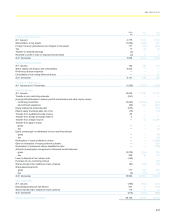 359
359 -
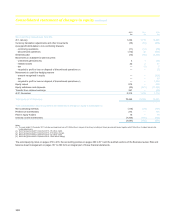 360
360 -
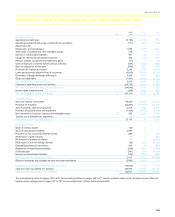 361
361 -
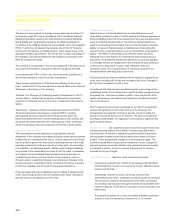 362
362 -
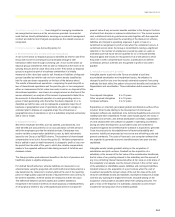 363
363 -
 364
364 -
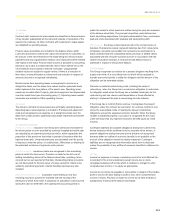 365
365 -
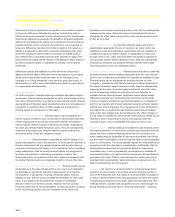 366
366 -
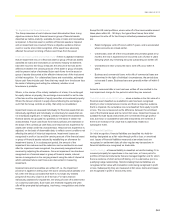 367
367 -
 368
368 -
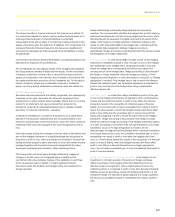 369
369 -
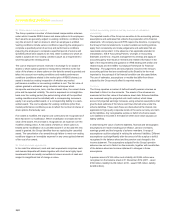 370
370 -
 371
371 -
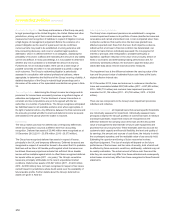 372
372 -
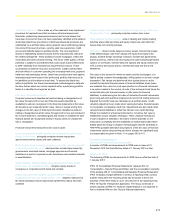 373
373 -
 374
374 -
 375
375 -
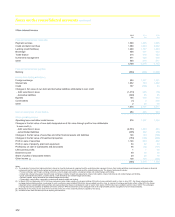 376
376 -
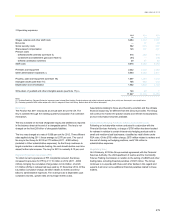 377
377 -
 378
378 -
 379
379 -
 380
380 -
 381
381 -
 382
382 -
 383
383 -
 384
384 -
 385
385 -
 386
386 -
 387
387 -
 388
388 -
 389
389 -
 390
390 -
 391
391 -
 392
392 -
 393
393 -
 394
394 -
 395
395 -
 396
396 -
 397
397 -
 398
398 -
 399
399 -
 400
400 -
 401
401 -
 402
402 -
 403
403 -
 404
404 -
 405
405 -
 406
406 -
 407
407 -
 408
408 -
 409
409 -
 410
410 -
 411
411 -
 412
412 -
 413
413 -
 414
414 -
 415
415 -
 416
416 -
 417
417 -
 418
418 -
 419
419 -
 420
420 -
 421
421 -
 422
422 -
 423
423 -
 424
424 -
 425
425 -
 426
426 -
 427
427 -
 428
428 -
 429
429 -
 430
430 -
 431
431 -
 432
432 -
 433
433 -
 434
434 -
 435
435 -
 436
436 -
 437
437 -
 438
438 -
 439
439 -
 440
440 -
 441
441 -
 442
442 -
 443
443 -
 444
444 -
 445
445 -
 446
446 -
 447
447 -
 448
448 -
 449
449 -
 450
450 -
 451
451 -
 452
452 -
 453
453 -
 454
454 -
 455
455 -
 456
456 -
 457
457 -
 458
458 -
 459
459 -
 460
460 -
 461
461 -
 462
462 -
 463
463 -
 464
464 -
 465
465 -
 466
466 -
 467
467 -
 468
468 -
 469
469 -
 470
470 -
 471
471 -
 472
472 -
 473
473 -
 474
474 -
 475
475 -
 476
476 -
 477
477 -
 478
478 -
 479
479 -
 480
480 -
 481
481 -
 482
482 -
 483
483 -
 484
484 -
 485
485 -
 486
486 -
 487
487 -
 488
488 -
 489
489 -
 490
490 -
 491
491 -
 492
492 -
 493
493 -
 494
494 -
 495
495 -
 496
496 -
 497
497 -
 498
498 -
 499
499 -
 500
500 -
 501
501 -
 502
502 -
 503
503 -
 504
504 -
 505
505 -
 506
506 -
 507
507 -
 508
508 -
 509
509 -
 510
510 -
 511
511 -
 512
512 -
 513
513 -
 514
514 -
 515
515 -
 516
516 -
 517
517 -
 518
518 -
 519
519 -
 520
520 -
 521
521 -
 522
522 -
 523
523 -
 524
524 -
 525
525 -
 526
526 -
 527
527 -
 528
528 -
 529
529 -
 530
530 -
 531
531 -
 532
532 -
 533
533 -
 534
534 -
 535
535 -
 536
536 -
 537
537 -
 538
538 -
 539
539 -
 540
540 -
 541
541 -
 542
542 -
 543
543
 |
 |

RBS GROUP 2012
365
16. Impairment of financial assets
The Group assesses at each balance sheet date whether there is any
objective evidence that a financial asset or group of financial assets
classified as held-to-maturity, available-for-sale or loans and receivables
is impaired. A financial asset or portfolio of financial assets is impaired
and an impairment loss incurred if there is objective evidence that an
event or events since initial recognition of the asset have adversely
affected the amount or timing of future cash flows from the asset.
Financial assets carried at amortised cost - if there is objective evidence
that an impairment loss on a financial asset or group of financial assets
classified as loans and receivables or as held-to-maturity investments
has been incurred, the Group measures the amount of the loss as the
difference between the carrying amount of the asset or group of assets
and the present value of estimated future cash flows from the asset or
group of assets discounted at the effective interest rate of the instrument
at initial recognition. For collateralised loans and receivables, estimated
future cash flows include cash flows that may result from foreclosure less
the costs of obtaining and selling the collateral, whether or not
foreclosure is probable.
Where, in the course of the orderly realisation of a loan, it is exchanged
for equity shares or property, the exchange is accounted for as the sale
of the loan and the acquisition of equity securities or investment property.
Where the Group’s interest in equity shares following the exchange is
such that the Group controls an entity, that entity is consolidated.
Impairment losses are assessed individually for financial assets that are
individually significant and individually or collectively for assets that are
not individually significant. In making collective impairment assessments,
financial assets are grouped into portfolios on the basis of similar risk
characteristics. Future cash flows from these portfolios are estimated on
the basis of the contractual cash flows and historical loss experience for
assets with similar credit risk characteristics. Historical loss experience is
adjusted, on the basis of observable data, to reflect current conditions not
affecting the period of historical experience. Impairment losses are
recognised in profit or loss and the carrying amount of the financial asset
or group of financial assets reduced by establishing an allowance for
impairment losses. If, in a subsequent period, the amount of the
impairment loss reduces and the reduction can be ascribed to an event
after the impairment was recognised, the previously recognised loss is
reversed by adjusting the allowance. Once an impairment loss has been
recognised on a financial asset or group of financial assets, interest
income is recognised on the carrying amount using the rate of interest at
which estimated future cash flows were discounted in measuring
impairment.
Impaired loans and receivables are written off, i.e. the impairment
provision is applied in writing down the loan's carrying value partially or in
full, when the Group concludes that there is no longer any realistic
prospect of recovery of part or all of the loan. For loans that are
individually assessed for impairment, the timing of write off is determined
on a case-by-case basis. Such loans are reviewed regularly and write
offs will be prompted by bankruptcy, insolvency, renegotiation and similar
events.
Except for US retail portfolios, where write off of the irrecoverable amount
takes place within 60 - 180 days, the typical time frames from initial
impairment to write off for the Group’s collectively-assessed portfolios
are:
x Retail mortgages: write off occurs within 5 years, and is accelerated
where accounts are closed earlier.
x Credit cards: write off of the irrecoverable amount takes place at 12
months; the rest is expected to be recovered over a further 3 years
following which any remaining amounts outstanding are written off.
x Overdrafts and other unsecured loans: write offs occur within 6
years.
x Business and commercial loans: write offs of commercial loans are
determined in the light of individual circumstances; the period does
not exceed 5 years. Business loans are generally written off within 5
years.
Amounts recovered after a loan has been written off are credited to the
loan impairment charge for the period in which they are received.
Financial assets carried at fair value - when a decline in the fair value of a
financial asset classified as available-for-sale has been recognised
directly in other comprehensive income and there is objective evidence
that it is impaired, the cumulative loss is reclassified from equity to profit
or loss. The loss is measured as the difference between the amortised
cost of the financial asset and its current fair value. Impairment losses on
available-for-sale equity instruments are not reversed through profit or
loss, but those on available-for-sale debt instruments are reversed, if
there is an increase in fair value that is objectively related to a
subsequent event.
17. Financial liabilities
On initial recognition, financial liabilities are classified into held-for-
trading; designated as at fair value through profit or loss; or amortised
cost. Issues of financial liabilities measured at amortised cost are
recognised on settlement date; all other regular way transactions in
financial liabilities are recognised on trade date.
Held-for-trading - a financial liability is classified as held-for-trading if it is
incurred principally for repurchase in the near term, or forms part of a
portfolio of financial instruments that are managed together and for which
there is evidence of short-term profit taking, or it is a derivative (not in a
qualifying hedge relationship). Held-for-trading financial liabilities are
recognised at fair value with transaction costs being recognised in profit
or loss. Subsequently they are measured at fair value. Gains and losses
are recognised in profit or loss as they arise.
